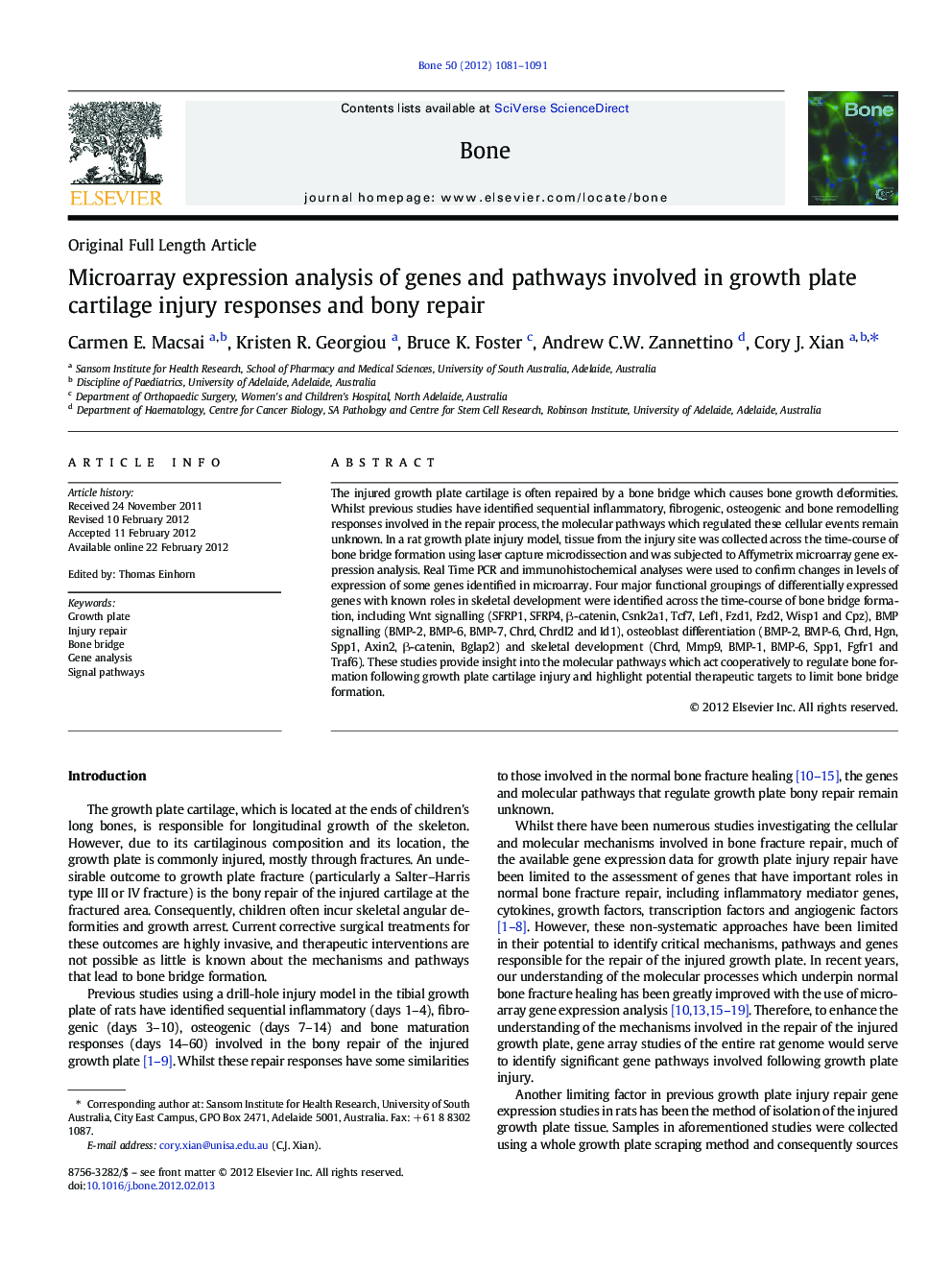| Article ID | Journal | Published Year | Pages | File Type |
|---|---|---|---|---|
| 2779537 | Bone | 2012 | 11 Pages |
The injured growth plate cartilage is often repaired by a bone bridge which causes bone growth deformities. Whilst previous studies have identified sequential inflammatory, fibrogenic, osteogenic and bone remodelling responses involved in the repair process, the molecular pathways which regulated these cellular events remain unknown. In a rat growth plate injury model, tissue from the injury site was collected across the time-course of bone bridge formation using laser capture microdissection and was subjected to Affymetrix microarray gene expression analysis. Real Time PCR and immunohistochemical analyses were used to confirm changes in levels of expression of some genes identified in microarray. Four major functional groupings of differentially expressed genes with known roles in skeletal development were identified across the time-course of bone bridge formation, including Wnt signalling (SFRP1, SFRP4, β-catenin, Csnk2a1, Tcf7, Lef1, Fzd1, Fzd2, Wisp1 and Cpz), BMP signalling (BMP-2, BMP-6, BMP-7, Chrd, Chrdl2 and Id1), osteoblast differentiation (BMP-2, BMP-6, Chrd, Hgn, Spp1, Axin2, β-catenin, Bglap2) and skeletal development (Chrd, Mmp9, BMP-1, BMP-6, Spp1, Fgfr1 and Traf6). These studies provide insight into the molecular pathways which act cooperatively to regulate bone formation following growth plate cartilage injury and highlight potential therapeutic targets to limit bone bridge formation.
► Injured growth plate cartilage is often repaired by bony tissue causing growth deformities, for which the underlying mechanisms are unknown. ► Laser-capture microdissected rat tibial growth plate injury site at different days after injury was analysed by cDNA microarray. ► Four major functional groupings of differentially expressed genes were identified, involved in Wnt signalling, BMP signalling, osteoblastogenesis and skeletal development. ► Several genes identified during the time-course of bone bridge formation have not been previously identified during normal bone fracture healing. ► Genes and molecular pathways identified in this study may provide potential targets to limit bone bridge formation.
